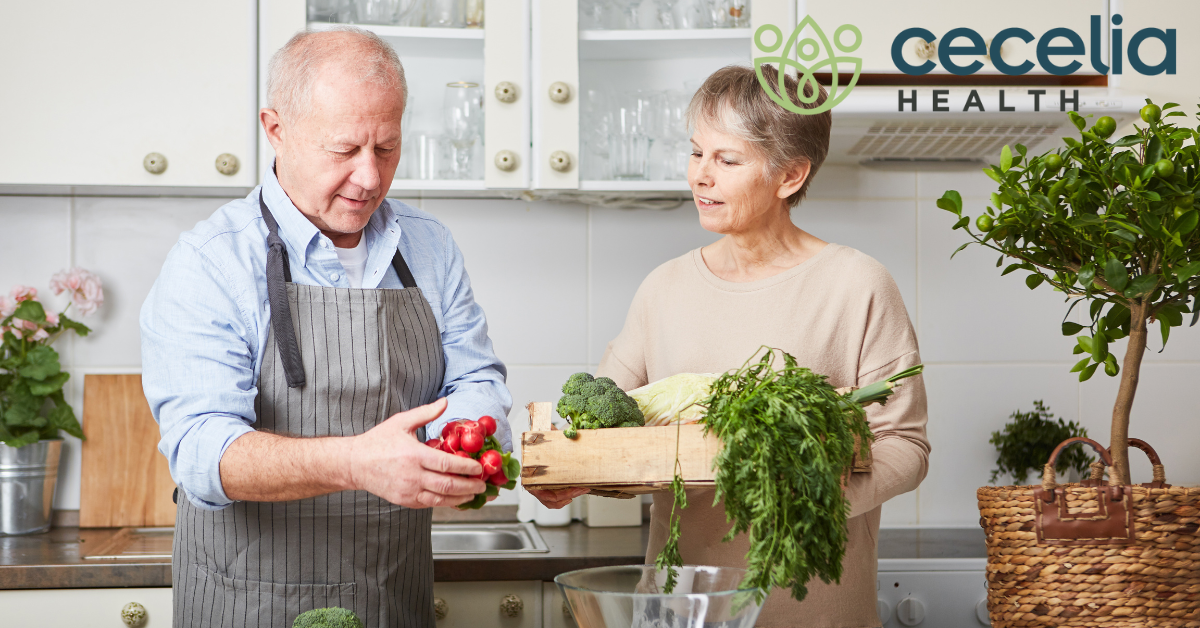Healthy eating is one of the key components of managing diabetes, in fact it is one of the ADCES7 Self Care Behaviors developed by diabetes care and education specialists to help people with diabetes undertake a well-balanced treatment approach for long term self-management. Cooking meals at home gives you control of ingredients, preparation methods and portions, which is a major plus, and having the right equipment available can make a big difference. Check out these key kitchen tools to ensure success for healthy cooking at home:
- Measuring cups and spoons– these are a must have for any cook in order to ensure precise and consistent measurement in cooking and baking to follow recipes to a tee. In addition to measurement in recipes, cups and spoons are also helpful when portioning out food on your plate to keep weight and blood sugar under control. It can be easy to go overboard with foods like pasta, rice, salad dressings and oils unless they are measured out accurately. Try measuring cups that are dishwasher safe for easy clean up and made of sturdy material like stainless steel so they will keep long term.
- Quality Cookware– investing in good pots and pans will go a long way in allowing you to prepare healthy meals. There are a variety of materials to choose from so you may want to do some research to see what works best for you. Non-stick and ceramic pots and pans allow you to use less oil and other fats in cooking to keep calories down. If you want durable materials like stainless steel or cast iron, these may require some fat to coat them, but you can use a very light coating of oil or cooking spray to help control portions. One advantage of cast iron and stainless steel cookware is that they can be placed in the oven for finishing a dish that requires baking or roasting.
- Veggie spiralizer– this tool has become very popular in recent years to cut veggies in a unique way that actually revolutionized low carb cooking. This device allows you to take vegetables like zucchini, carrots, sweet potatoes, cabbage and beets and cut them into thin noodle-like strips that work as a great substitute for pasta or to add atop salads or in casseroles.
- Slow Cookers– which have been around for decades, are now very popular again because of their ease of use, time saving properties and because they are ideal for healthy cooking. These “set it and forget it” devices allow you to put ingredients in the slow cooker early in the day and allow them to cook at a low temperature for several hours or more. Meals made in a slow cooker do not require the addition of fats, and the slow cooking helps tenderize tougher cuts of meat. Soups, sauces, and stews are just a few examples of the items you can cook in a slow cooker, and can even include breakfast options, like oatmeal.
- Instant pots- are also gaining a following for those cooking healthy. They have many functions but act mainly as a pressure cooker. Pressure cookers drastically reduces the cooking time of foods, allowing you to come home and cook beans, meat or soup in less than 30 minutes.
- Air Fryer– are one of the latest healthy cooking appliances that have been developed. They are essentially a mini-convection oven, which circulates air to create a fried effect to food using hot air instead of any oil. This can be helpful for those that don’t love traditional soft steamed or roasted vegetables, since you can get a more crispy texture with air fryers. Air fryers are also small, and similarly with instapots and slow cookers, minimal to no fat is needed in the cooking.
- Spice rack– one of the best ways to flavor your food without a lot of fat, calories and sodium is to add herbs and spices. Keeping a nice collection of dried herbs and spices to have on hand will allow you to experiment with a multitude of recipes and liven up any dish. There are a variety of ways to store and organized your herbs and spices so finding a system that fits your kitchen can be a fun project to add to your healthy cooking plan.
- Blender– this kitchen gadget often brings smoothies to mind but can also offer a lot more culinary capability. Blenders can also be used to make healthy soups, dressings, pancake and muffin mixes and even homemade whole grain flours, such as oat flour.
- Food processor– the food preparation possibilities when using a food processor are endless- from chopping veggies, to mixing batters, all the way to making sauces, hummus, dressings nut butters and even healthy homemade frozen desserts. While a food processor may be a bit more of an investment, it will last awhile, add a lot of versality to your cooking to keep things creative and interesting.
- Storage containers-if you are going to take time and effort to prepare healthy food, having some good containers to store it can make all the difference. Stocking some durable food-safe containers are great for storing leftovers in the fridge or freezer, bringing homemade meals on the go and even keeping pre-prepped ingredients and healthy snacks like chopped fruits and veggies. Food containers have come a long way, and are available in all sorts of shapes, sizes, made from different materials and sold in separates or sets. Some can even help with portion control. Find containers that fit your needs and budget to help store your foods and recipes that you create to promote healthy eating day to day.
